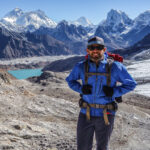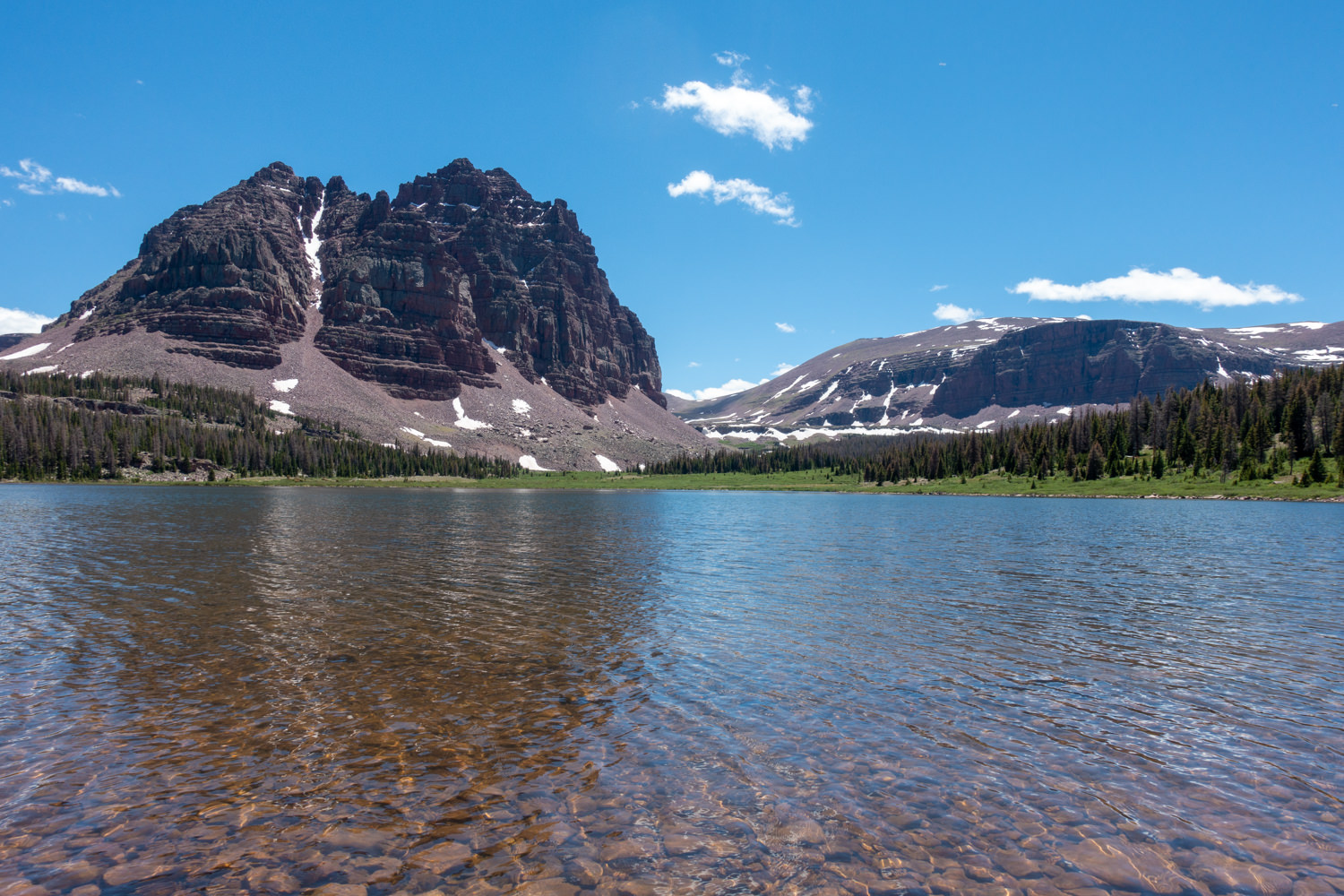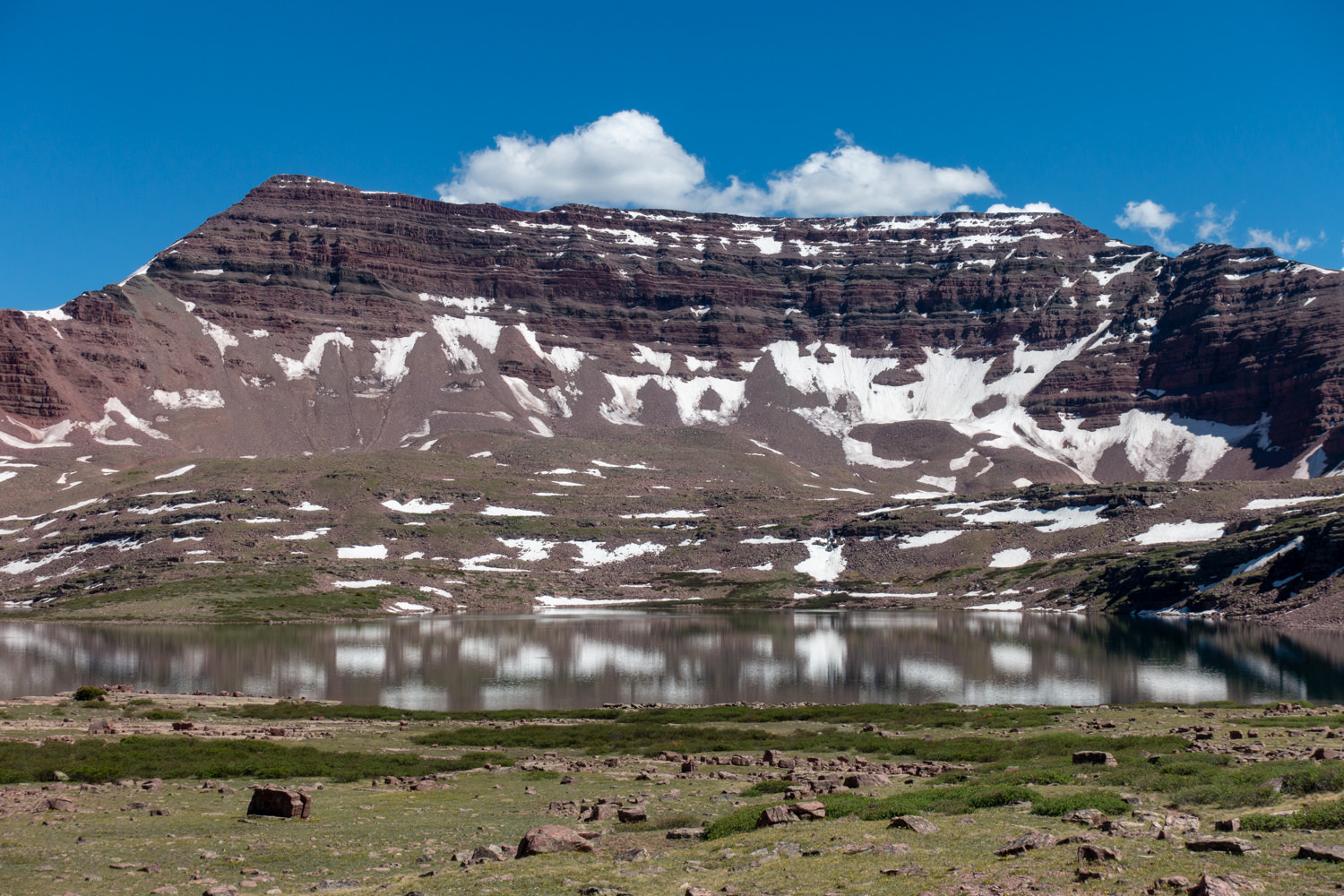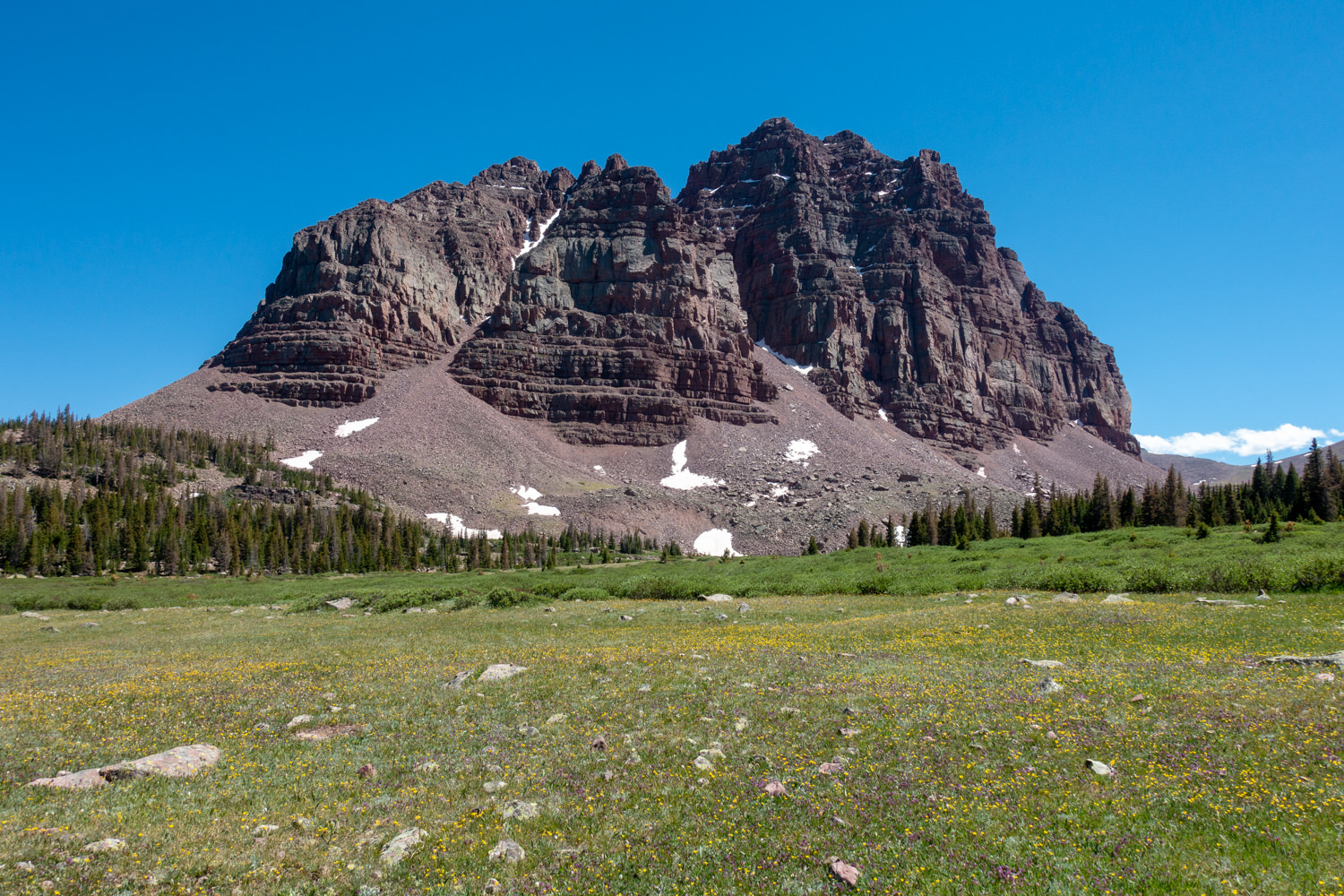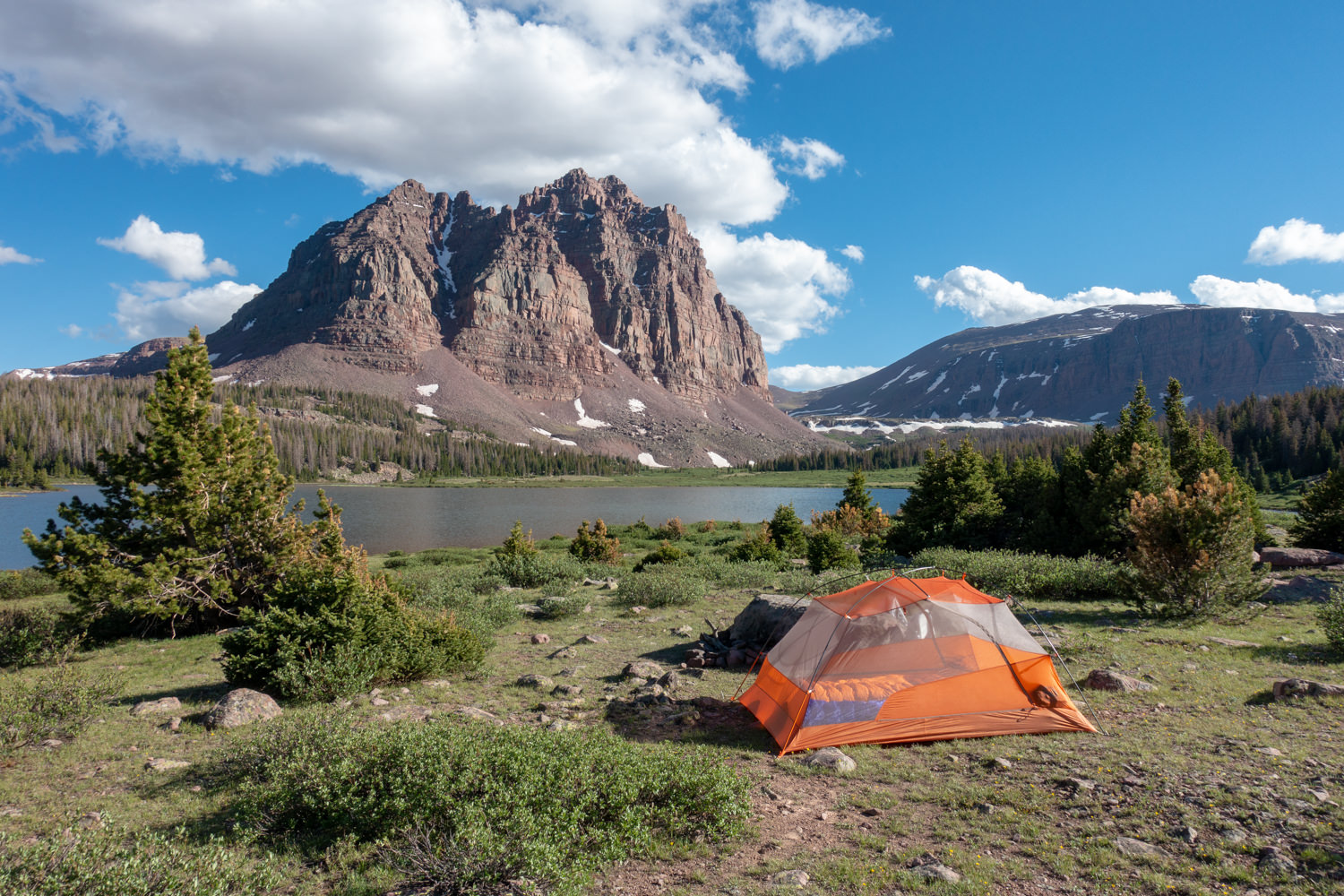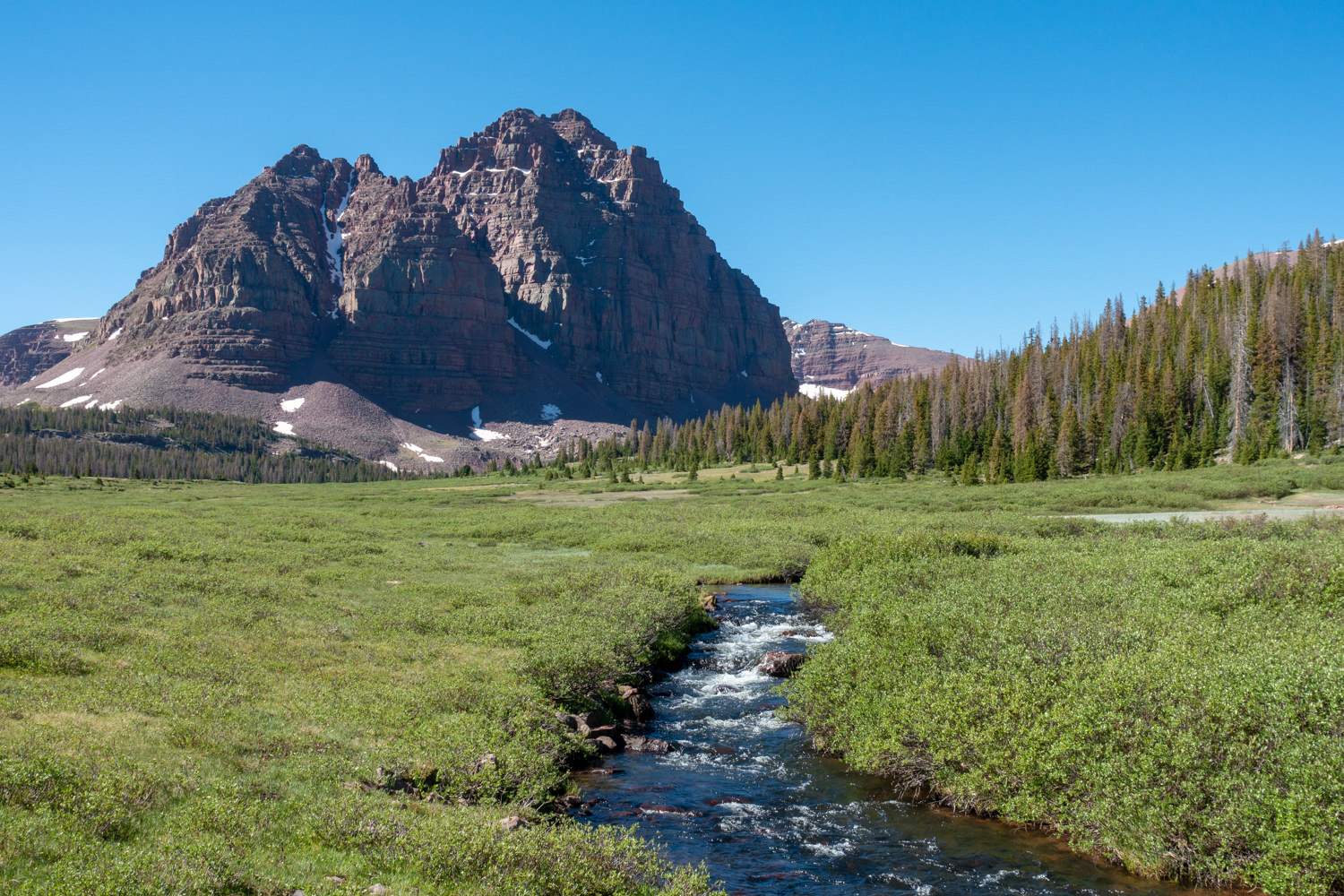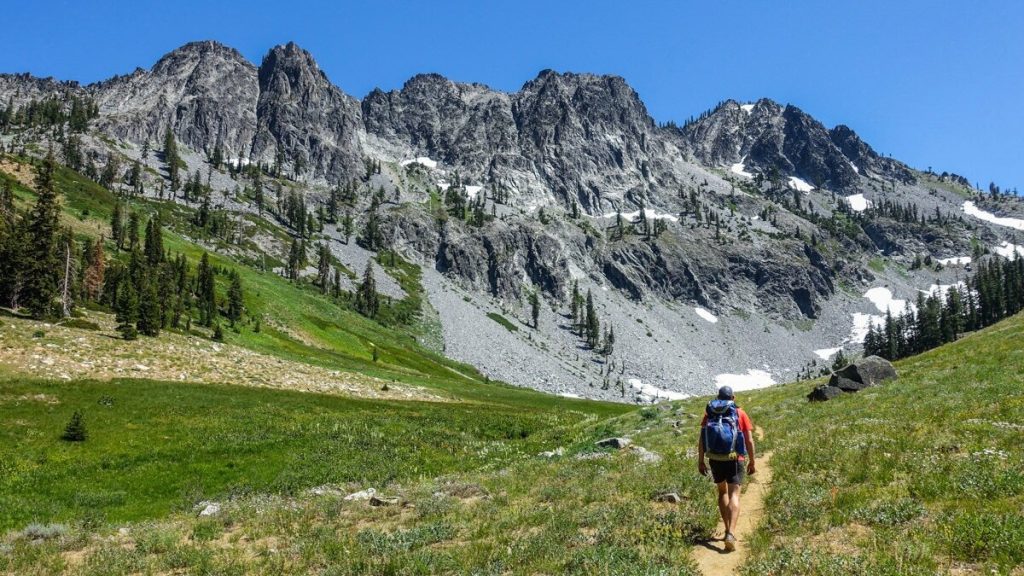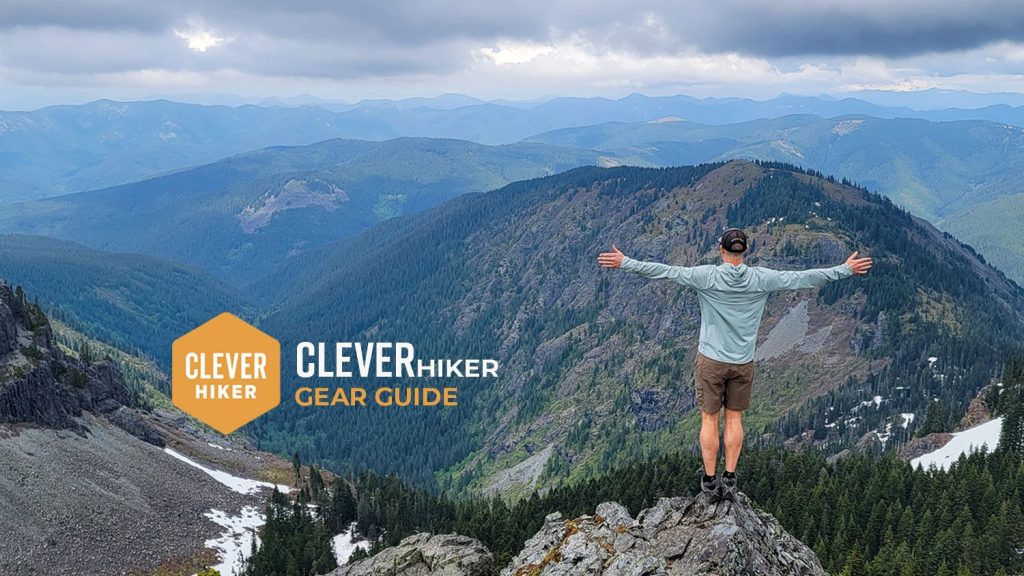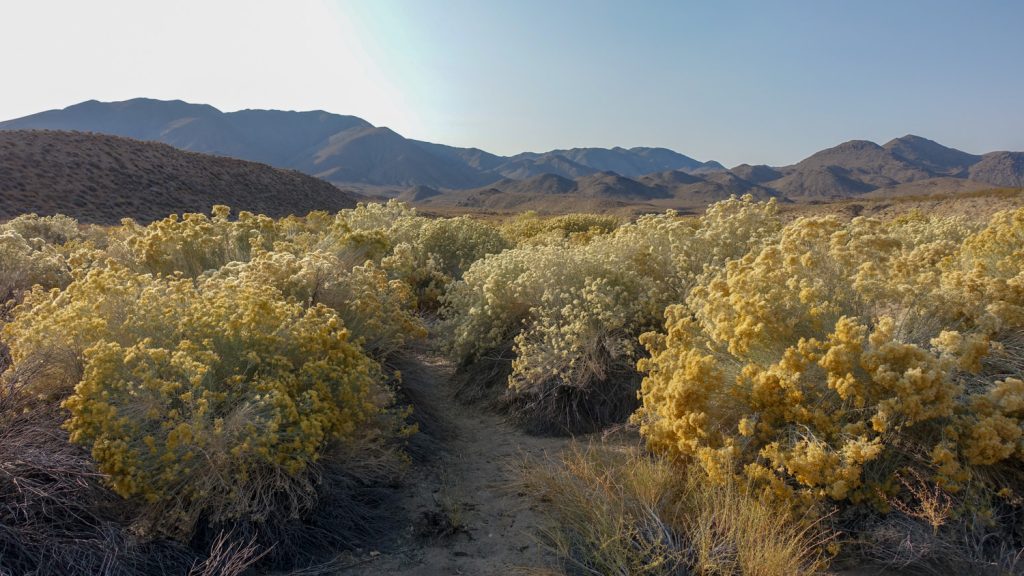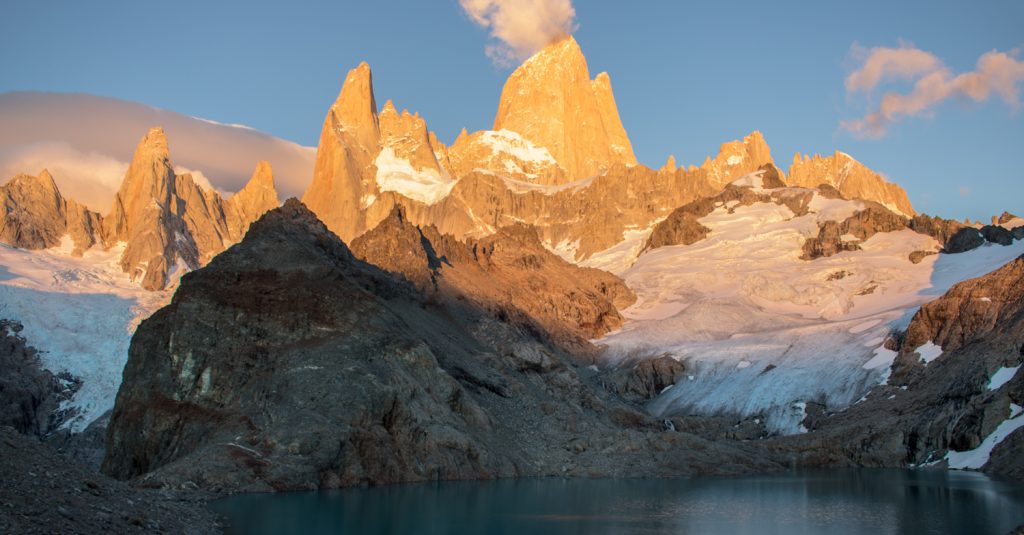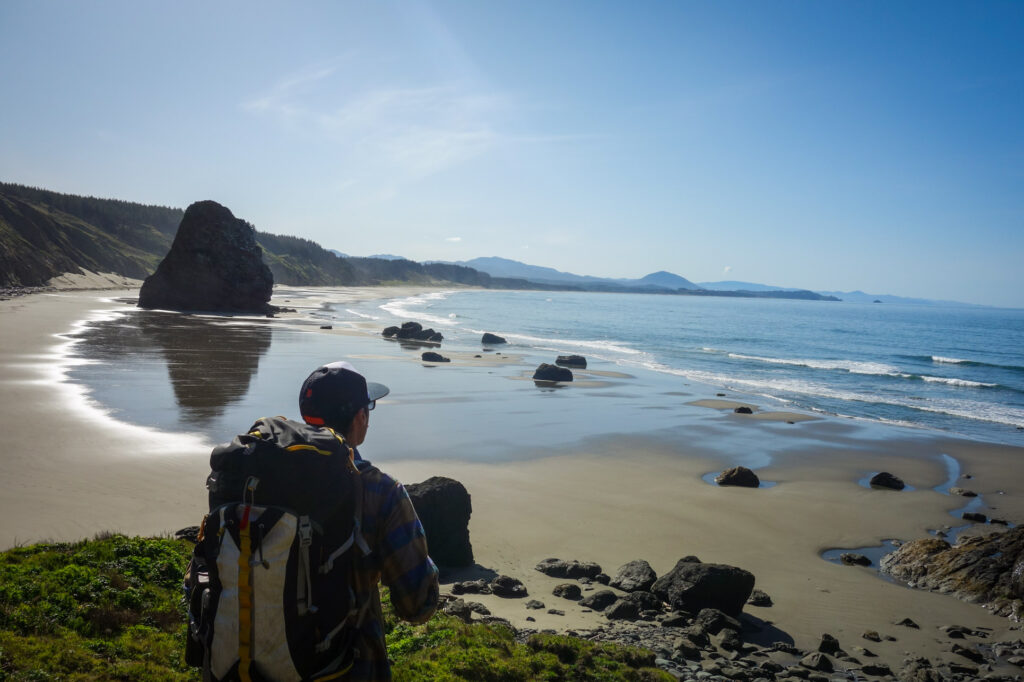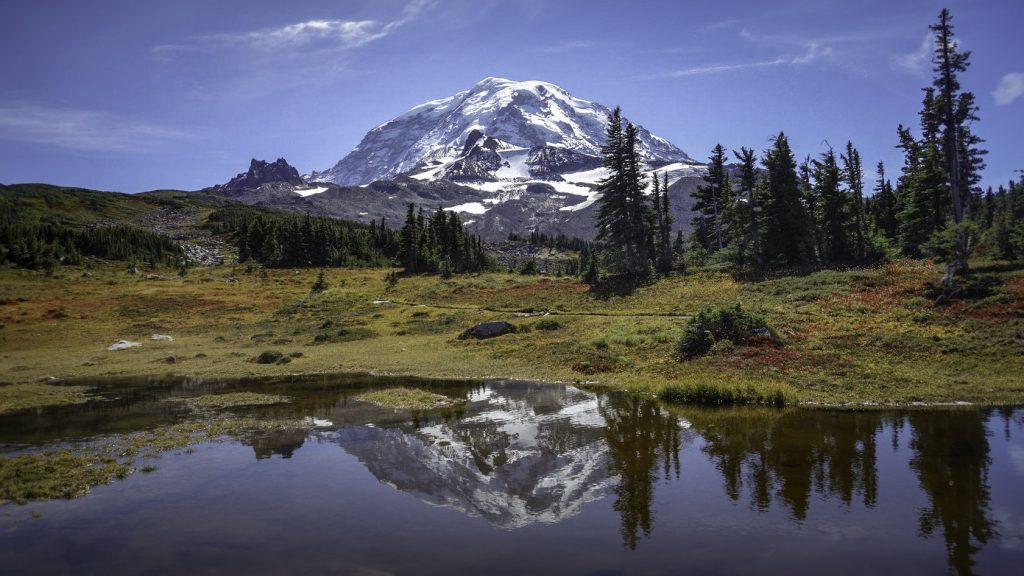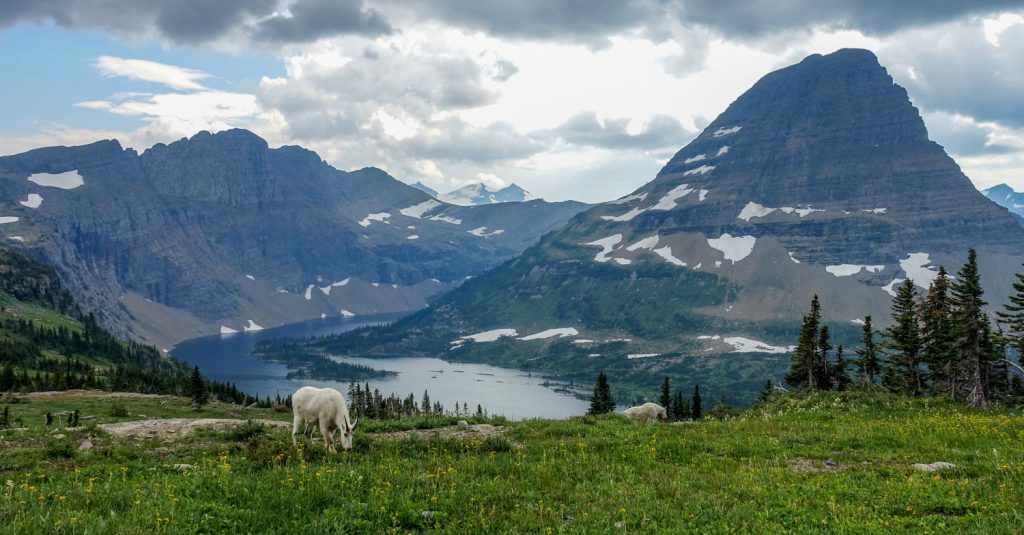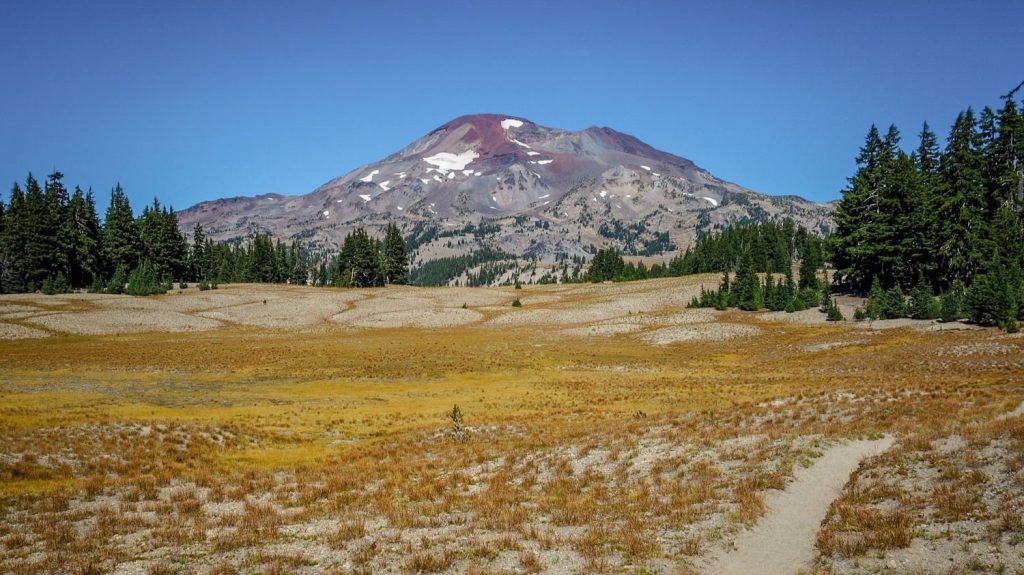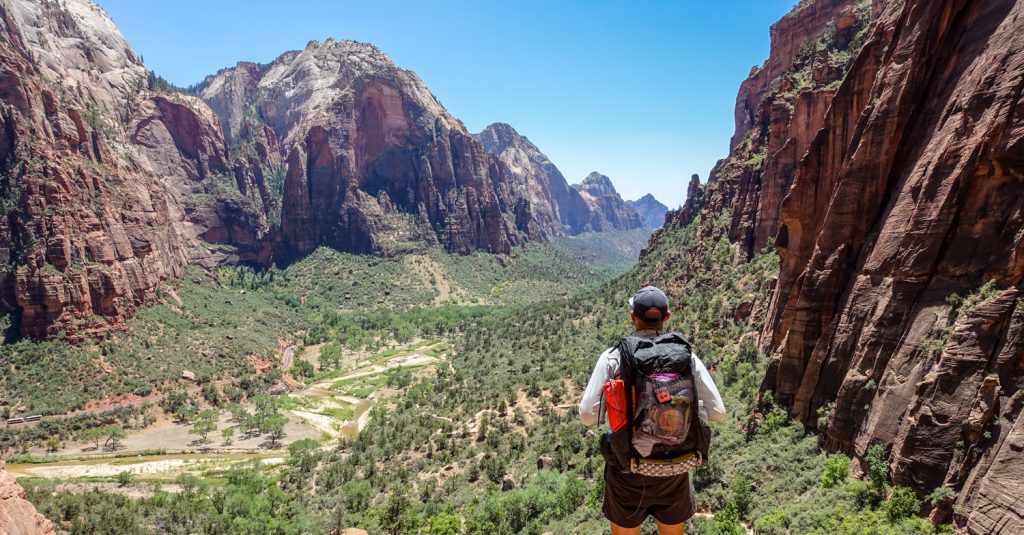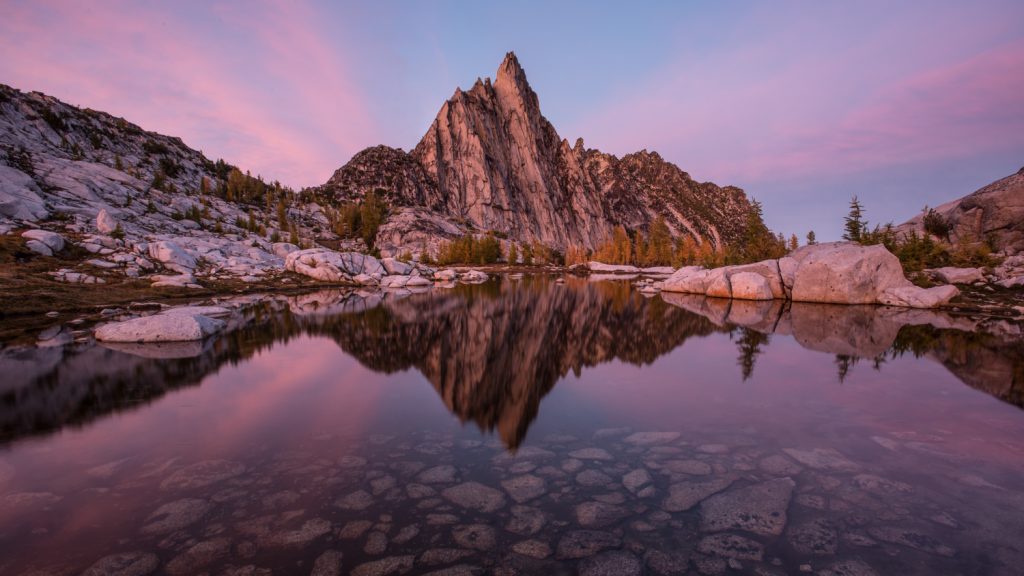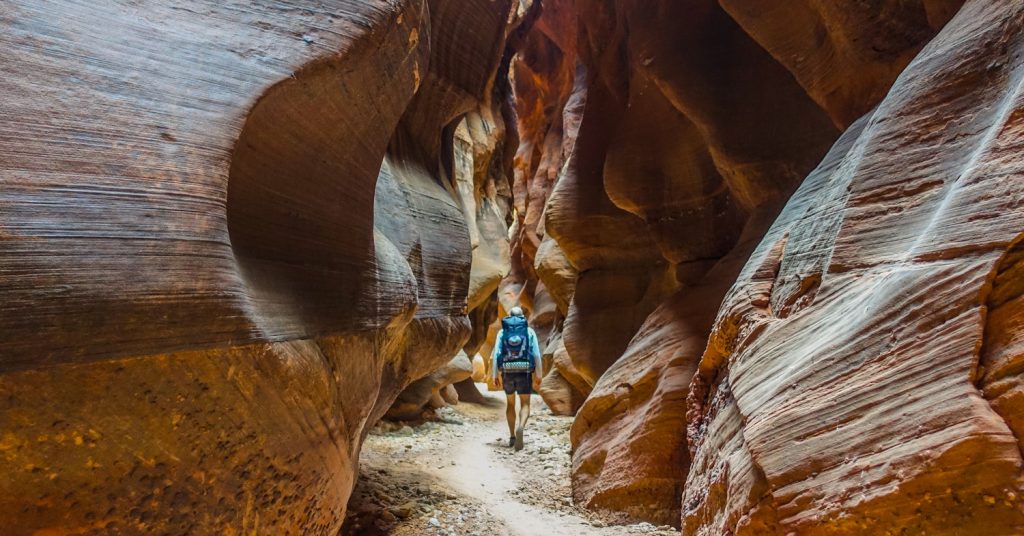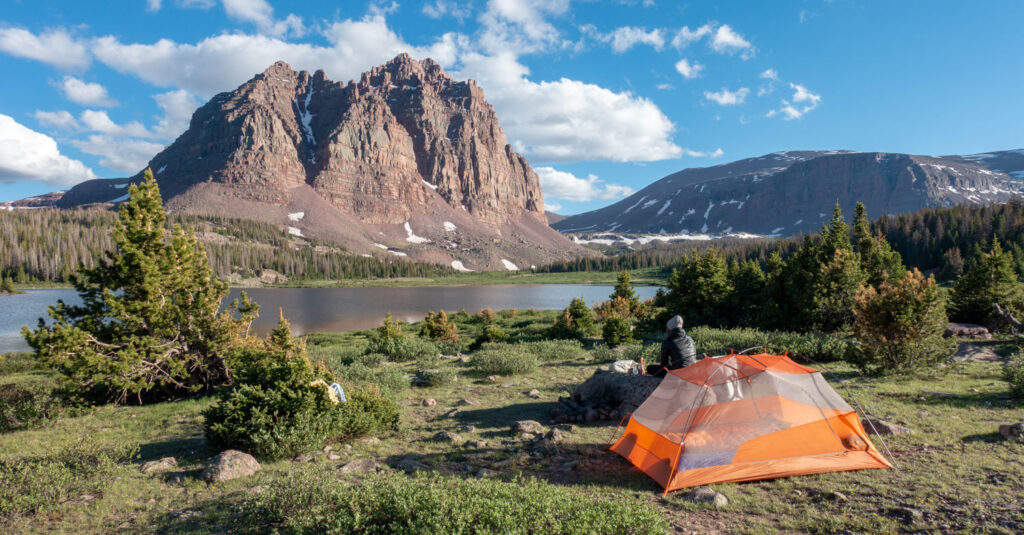
Gorgeous alpine meadows and pitch-perfect backcountry camping make this area, especially at sunset, a wonderland. It gets its name from the red castle-like peaks that stand like a fortress above the basin. With the ability to visit three different lakes along the trail, you could easily spend three days here, though most complete the trip in two. The landscape here is unbelievably photogenic, so don’t forget your camera. The Red Castle Peak downright glows at sunset.
Quick Facts
Distance: 20 miles (32 km) round-trip
Days Needed: 2-3 days
Elevation Gain: 1,437 feet (438 m)
Peak Elevation: 10,824 feet (3,300 m)
Best Travel Time: Late June – October, depending on snow level
Highlights
- Wildlife, including owls, elk, moose, mule deer
- Fascinating geology
- Fantastic photo opps
- Beautiful lakes and streams
- Beautiful meadows and wildflowers
- Nicely graded trail, never too steep
- Great fishing opportunities
- Dogs allowed (leashed)
Lowlights
- Can be busy on weekends
- Rough rock strewn landscape
- Muddy, rocky trails
- Seasonal mosquitos
- Cold lakes makes swimming tempting but challenging
- Giardia and campylobacter are prevalent in the streams and lakes
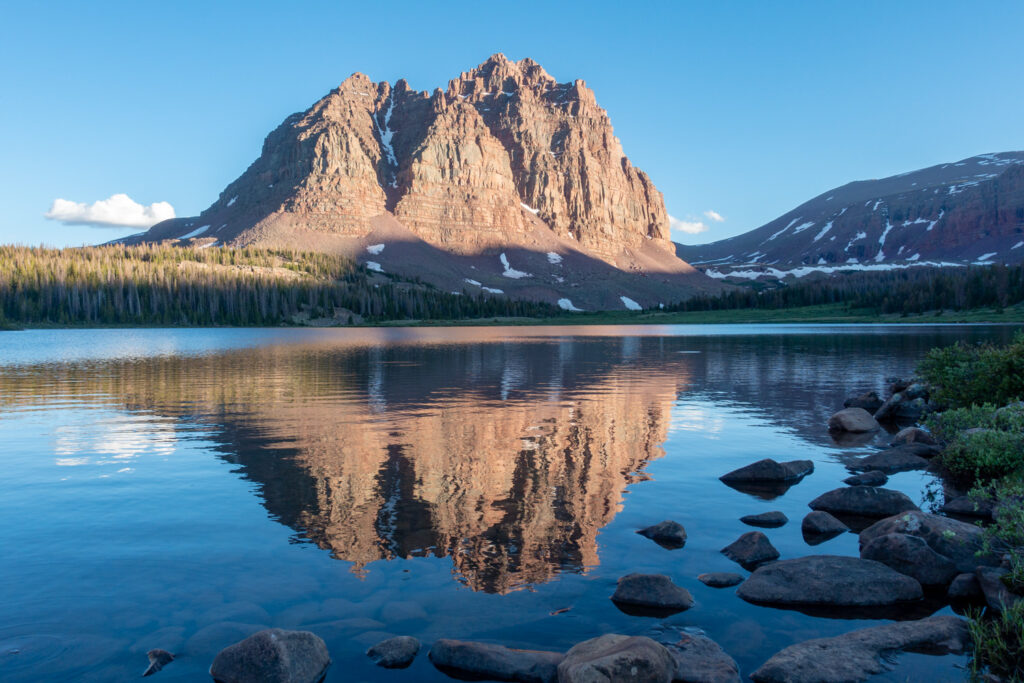
Best Time to Travel
July to September offer the best temperatures in the High Uinta Wilderness. Daytime highs are typically in the high 70s, while night temperatures during summer range between 30-40 degrees. Afternoon thunderstorms are fairly typical and lightening is always a serious threat above treeline.
August is the busiest month for backpacking in the high country, specifically in the basins. To avoid the crowds, we recommend visiting this area mid-week, if possible.
Prior to any trip into the backcountry, check the National Weather Service for the local forecast.
Difficulty
We rate most backpacking trips in this area as moderate due to rocky, sometimes muddy trails and the high elevation. As always, difficulty ratings depend on the route you choose, experience, physical fitness, pack weight, and weather conditions. Although most routes in Uintas are not technically demanding, you should always plan thoroughly, train properly, know your limitations, brush up on your skills, and dial in your gear. Doing so will make for a more safe and enjoyable adventure.
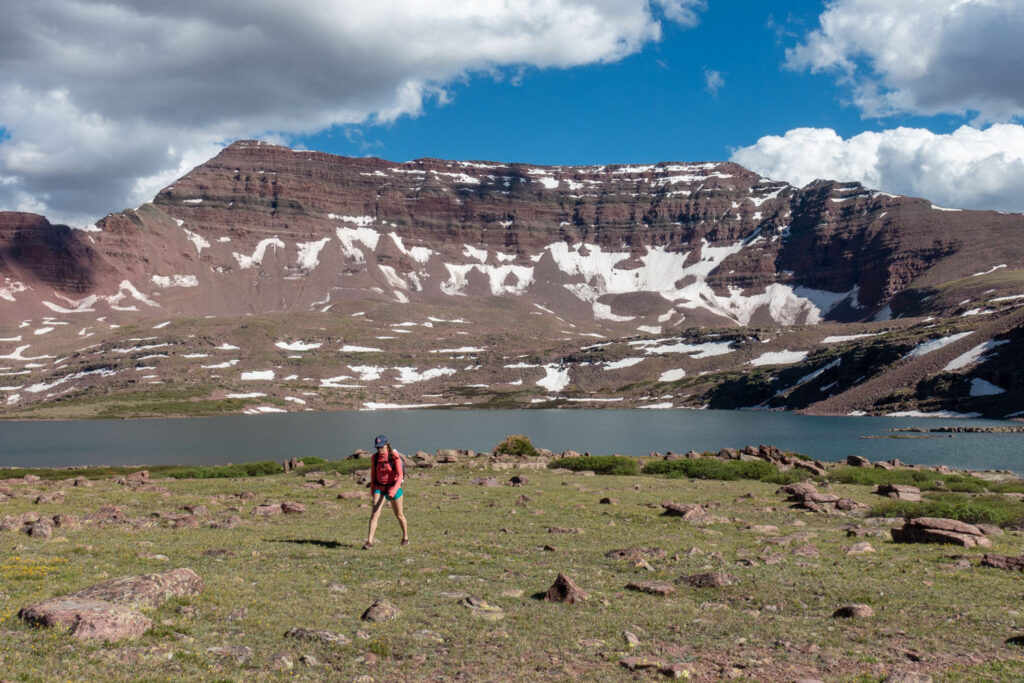
Permits
No permits required for backpacking Red Castle Lakes. Overnight parking at the trailhead is $3.00 per vehicle, per day and is self-issued.
Trailhead
You’ll begin this hike at the China Meadows Trailhead. For those looking to get an early start the following day, there’s also a fee campground at China Meadows.
To get to the trailhead, take Wyoming State Highway 410 South out of Mountain View for about 8 miles. The highway makes a sharp right turn to the west. Go straight on to Uinta County Road 283 (unpaved, gravel) and continue to Forest Service Road 072. Follow the signs past the Stateline Campground and past the China Meadows Campground to the China Meadows trailhead.
Campsites
Campsites are first come, first serve and most abundant around Lower Red Castle Lake in forested areas. There are a few possible camps higher at Red Castle Lake, but this area is completely above treeline, fully exposed, and can get extremely windy.
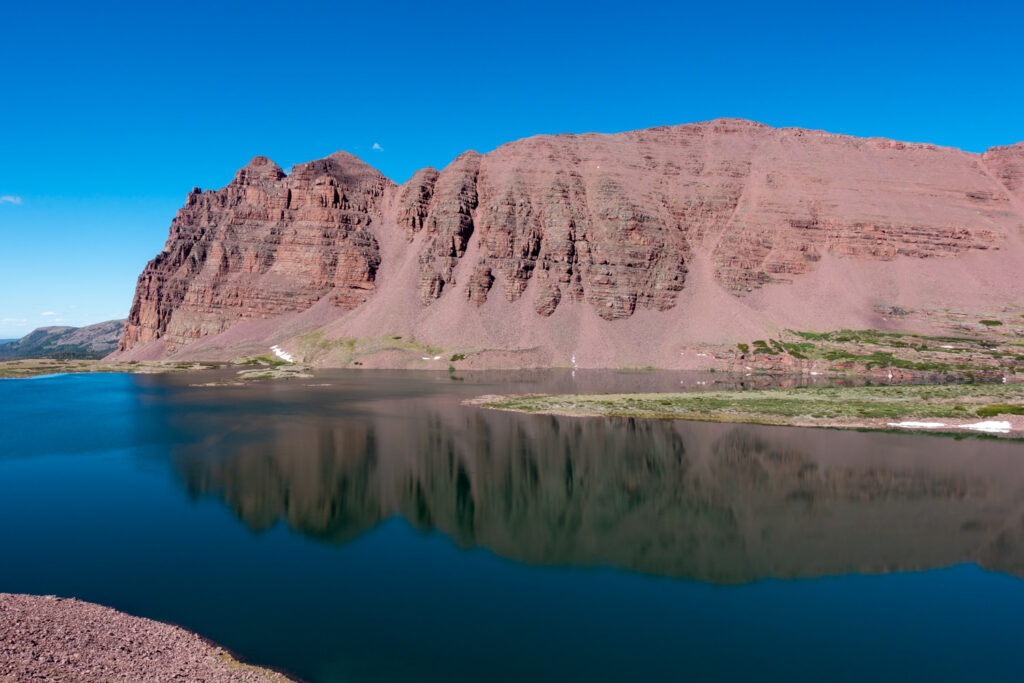
Possible Itineraries
Most people complete this backpacking trip in 2-3 days. There is an option to connect Henry Forks Lake Loop to Red Castle Lakes to make for a longer backpacking trip. That said, the connecting trails can be very hard to follow and non-existent at times. It’ll require excellent navigation skills, following cairns/blazes, and using GPS as you hike past the Lake Hessie turnout. The view from the top of this pass is stunning, but we would only recommend this route for experienced backpackers.
Lower Red Castle Lake and Red Castle Lake are beautiful and fairly easy to access via well traveled trails. There is an option to continue even farther to Upper Red Castle Lake, but that will require a very challenging traverse over boulder fields and loose scree along the west slope of Red Castle Lake. There are a few cairns and signs from other hikers, but for the most part the route to Upper Red Castle Lake is completely off trail, and we really only recommend it to confident experts.
Two Day Itinerary
Starting trailhead: China Meadows Trailhead
Ending trailhead: China Meadows Trailhead
- Day 1 – Hike to Lower Red Castle, Camp (day hike up to Red Castle)
- Day 2 – Return to China Meadows Trailhead
Total mileage: 20 miles
Three Day Itinerary
Starting trailhead: China Meadows Trailhead
Ending trailhead: China Meadows Trailhead
- Day 1 – Hike to Lower Red Castle, Camp (day hike up to Red Castle)
- Day 2 – Hike back down E. Fork Smiths Fork to Junction with the Highline “A” North Slope (also called the Henrys Fork Junction). Go 2.5 miles east, then southeast on this trail to the Junction with Lake Hessie, go west for a ¼-mile and camp at the lake.
- Day 3 – Retrace back China Meadows Trailhead
Total mileage: 25.5 miles
More Red Castle Lakes Photos
Maps & Guidebooks
- Hiking Utah’s High Uintas: A Guide to the Region’s Greatest Hikes by Brett Prettyman, an outdoors editor for the Salt Lake City Tribune. This guide includes descriptions of 99 routes throughout the backcountry wilderness of Utah’s Uinta Mountains and High Uintas Wilderness, including easy day hikes to great fishing spots, adventurous treks to remote campsites, and extended backpacking trips for intrepid wilderness travelers.
- National Geographic High Uinta’s Wilderness Trails Illustrated Map This map covers the High Uintas Wilderness, as well as the Ashley and Wasatch-Cache National Forests. It features key points of interest and is printed on “Backcountry Tough” waterproof, tear-resistant paper. A full UTM grid is printed on the map to aid with GPS navigation.
- 60 Hikes Within 60 Miles: Salt Lake City by Greg Witt. This book includes many of the best hikes in the Western Uintas with detailed trail descriptions that range from easy strolls to challenging backpacks. Extensive key-at-a-glance information makes it easier to choose a hike based on length, difficulty, or scenery.
- High Uintas Backcountry by Jeffrey Probst This trail guide travels the length of the Uintas with descriptions on 99 hikes, 600 fishable lakes, and over 400 miles of streams. Each story includes a trip planner, photo, and map. The appendix includes full maps of all areas, a campground and trailhead directory with directions. There are over 200 photos and maps.
- Gaia Phone app GPS and Caltopo Mapping Software – We use both these services for many of our backpacking trips to assist with route planning (Caltopo) and on-trail navigation (Gaia).
Water
Water is plentiful along the trail to Red Castle Lakes and accessible from small streams and lakes. Though many sources look pure, Giardia and Campylobacter are present in this area so we recommend using a lightweight water filter (here’s a list of our faves). We carried the MSR Trail Shot on our most recent trip and were happy with its performance. Two other good lightweight options are the SteriPen Ultra and Aquamira Drops.
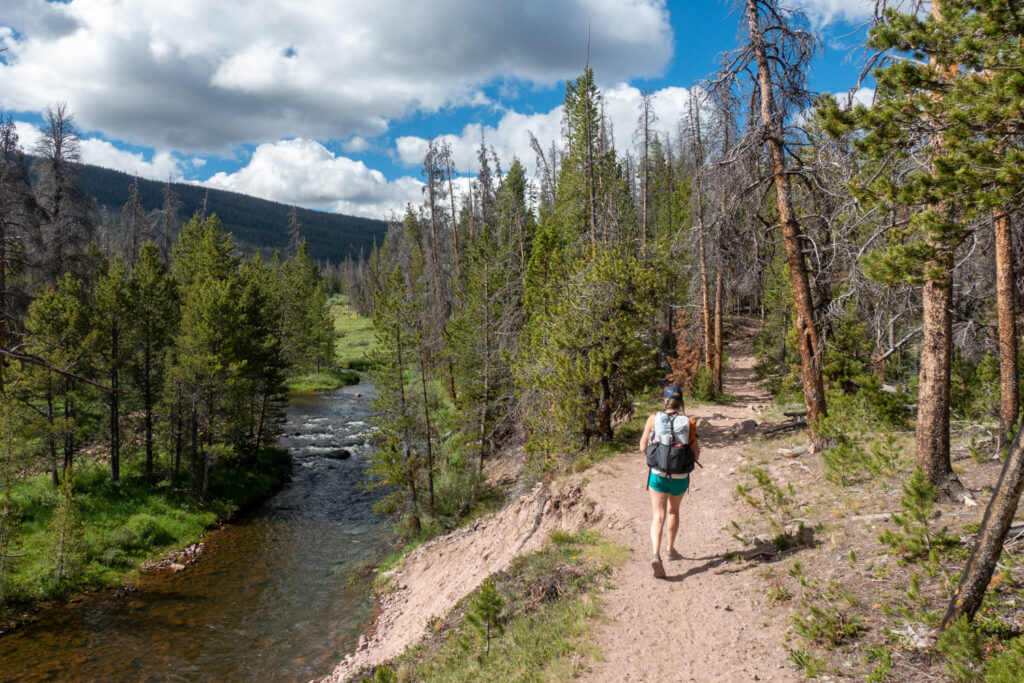
Regulations
For a full list of wilderness regulations in this area, visit this website. But in, general, the following apply:
- Stay on designated trails and do not cut switchbacks.
- Select a campsite 200 feet from trails or streams.
- Wash yourself and dishes away from water sources and only use biodegradable soap when necessary.
- Bury human waste and fish entrails 6-8″ deep and 200 feet away from water sources.
Campfires are prohibited near most lakes in this area, so please be respectful of this. Rangers can and will ticket offenders. The following lakes prohibit campfires:
- Lower Red Castle Lake
- Hessie Lake
Critters & Food Storage
Black bears are not a problem in this area so there are no food storage requirements. That said, you should always protect your food against rodents and small critters, which actually tend to cause many more problems than bears. We recommend packaging all your food and scented products in a food storage container such as an Ursack.
Bugs
Mosquitoes are present along this route and can be pretty vicious, especially early in the season and near bogs and water sources. Hiking later in the season is often bug-free. Use a combination of permethrin on your clothing and bring a small bottle of DEET for exposed skin to provide full protection.
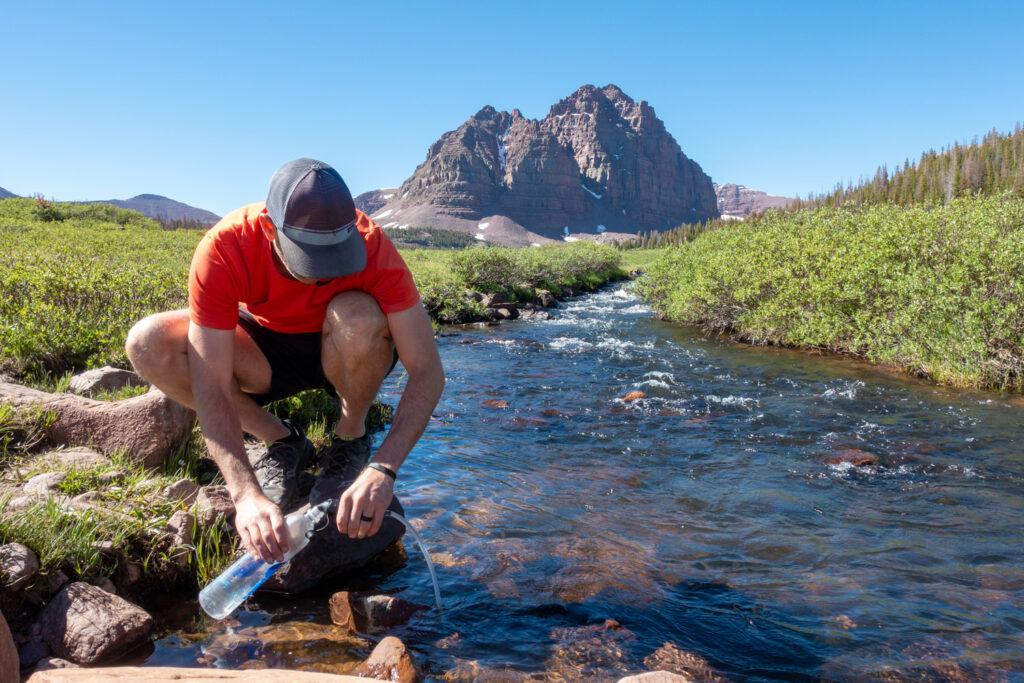
Backpacking Gear
We prefer lightweight backpacking because it’s more comfortable and it allows us to cover more ground with less effort. For recommendations on our favorite lightweight backpacking equipment, check out the CleverHiker Backpacking Gear Guide and our Top Backpacking Gear Picks page.
What to Pack
TENT
We used the Big Agnes Copper Spur HV UL3 tent on this trip for its lightweight livability. The Copper Spur is a top pick on our best lightweight backpacking tents list.
BACKPACK
We used Hyperlite Mountain Gear’s Southwest 2400 backpacks on this trek. The Southwest is incredibly lightweight, durable, nearly waterproof, and is a top pick on our best lightweight backpacks list.
SLEEPING BAG
We used the Feathered Friends Egret UL 20 and the Western Mountaineering UltraLite sleeping bags on this hike for night time temperatures right around freezing. Both sleeping bags are lightweight, warm, and make our list of the best backpacking sleeping bags.
SLEEPING PAD
We used the Therm-a-Rest NeoAir XLite andNEMO Tensor Insulated sleeping pads on this trip. Both are light, comfortable, warm, and make our list of the best backpacking sleeping pads.
COOKING SYSTEM
We used the BRS Stove, Snow Peak Mini Solo Cookset, and Snow Peak Folding Spoons on this hike, all of which make our top picks gear list and best lightweight stove list.
WATER PURIFIER
We used the MSR Trail Shot as our main purification method on this trip. It’s lightweight, affordable, and makes our best water purifiers list.
SHOES OR BOOTS
We wore Saucony Peregrine 8 trail runners (men’s and women’s) on this trail and they were excellent. If you prefer boots, make sure they’re lightweight and break them in really well before your trip. Here’s why we prefer hiking in trail running shoes: 5 Reasons to Ditch Your Hiking Boots. Also, here’s our list of the best backpacking shoes and boots.
HEADLAMP
A small headlamp like the Petzl Actik is an affordable, bright, and lightweight option. We’re big fans of ours.
FOOD
You’ll have to carry all the food you’ll need on this trip. Check out our Best Lightweight Backpacking Food Guide and our Best Freeze Dried Backpacking Meals for some of our go-to grub recommendations.
CLOTHING:
Here are some of our favorite hiking/backpacking clothing items from our Top Gear list.
- 1 Rain jacket shell: Patagonia Storm Racer / Rab Kinetic Plus
- 1 Pair rain pants (optional): Mountain Hardwear Stretch Ozonic
- 1 Down jacket: Patagonia Micro Puff Hoody & Montbell Plasma 1000
- 1 Fleece jacket: Extra warmth under your down jacket that will be warmer when damp and better to hike in.
- 1 Pair hiking pants: PrAna Zion Stretch or running tights
- 1 Pair hiking shorts: Nike dri fit running shorts
- 1-2 Hiking t-shirts: Nike dri fit t-shirts
- 1 Long-sleeve shirt: Nike dri fit quarter zip
- 1-3 Pair underwear: ExOfficio boxer briefs or ExOfficio women’s briefs
- 2-3 Pair socks (add thin sock liners if using boots): Balega running socks for warm weather & SmartWool mountaineer socks for in camp and on snow.
- 1 Pair long john bottoms and a long john top for nighttime use (optional).
- 1 Warm fleece hat
- 1 Sun hat
- 1 Pair fleece gloves or mittens
- 1 Pair rain mitts for wet trips (optional)
MAP &COMPASS
Although the trails here are well-marked, you always want to hike with a good map and GPS system, such as Gaia GPS. For our trip, we hiked with the National Geographic High Uinta’s Wilderness Trails Illustrated Map and used the route description provided in Hiking Utah’s High Uintas: A Guide to the Region’s Greatest Hikes. In addition, we always hike with a lightweight compass.
FIRST AID KIT
Always bring a small personalized first aid kit. We use the Ultralight .7 Kit and add extras, like painkillers and personal medications.
SUN PROTECTION
Sunglasses (polarized recommended), sunscreen, and spf lip balm are an absolute must for every backpacking trip.
POCKET KNIFE
We brought along a small Swiss Army Knife, which came in handy here and there.
OTHER ITEMS:
- Small towel: the Nano pack towel is great.
- Cash and ID
- Permits
- Personal toiletries
- Hand sanitizer: Always apply after using a bathroom and before eating.
- Wet wipes: These can be useful for cleaning up after hiking.
- Insect repellant: Use a combination of permethrin on your clothing and bring a 1oz bottle of DEET for exposed skin to provide full protection.
- Camera: The Sony RX100 is our go-to camera for lightweight backpacking

